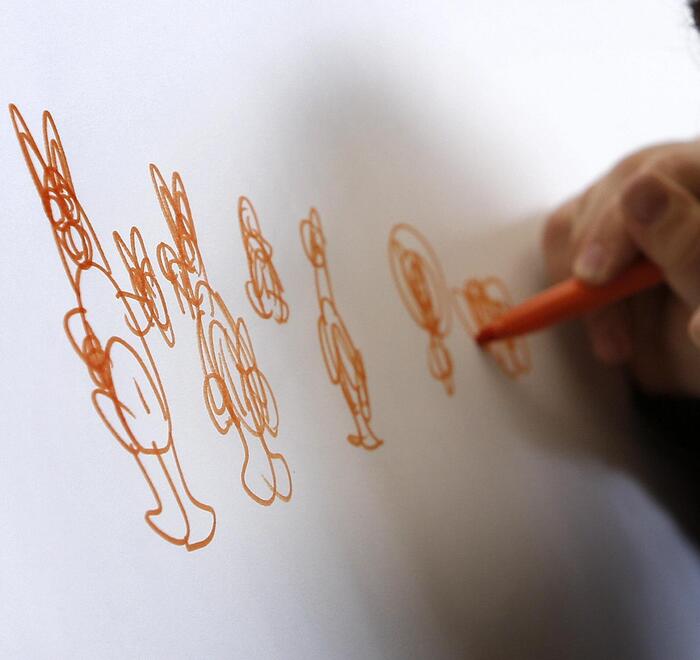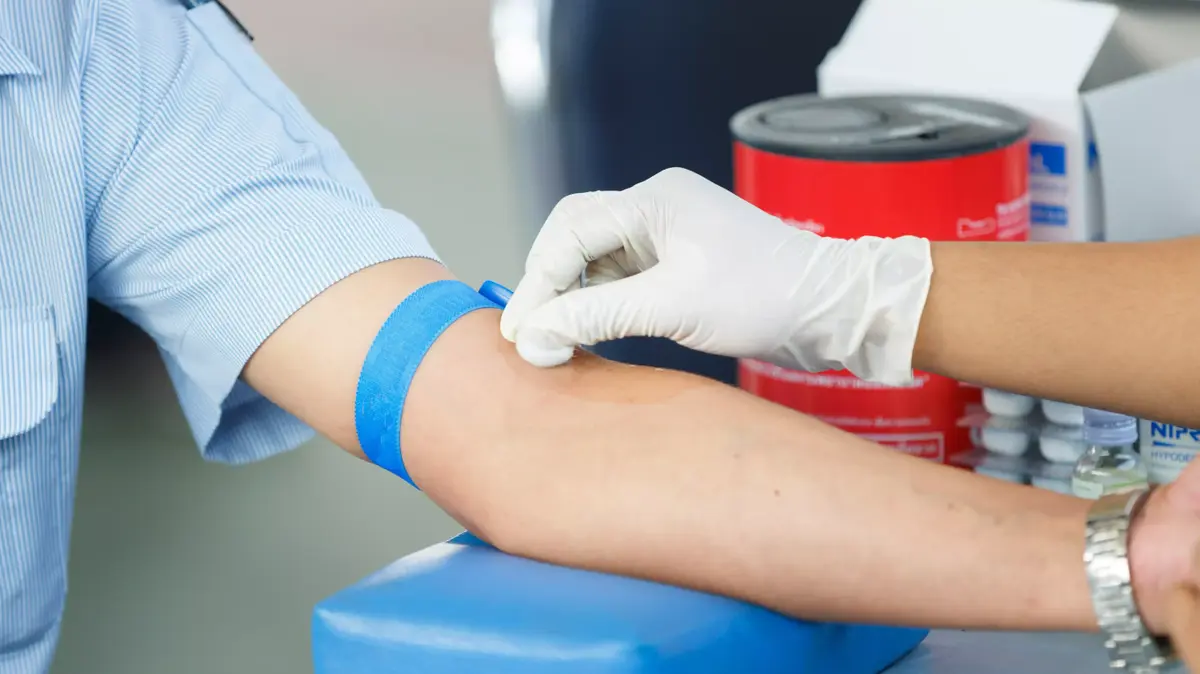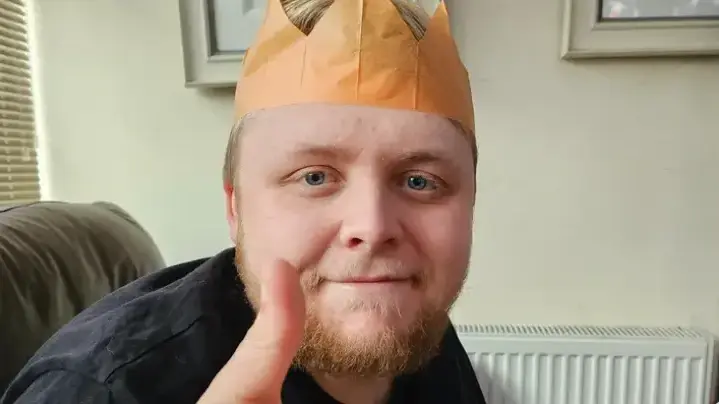By Evan Bush -
NBC News
Researchers first developed a test for autism that they say
is able to find risk markers from a single strand of hair.
The breakthrough, scientists think,
it can help identify this condition in children before they start to show symptoms.
The test—which is in the early stages of development by the company LinusBio and is far from federal approval—is a diagnostic tool intended to help identify autism, but not by itself.
[Your blood and smell may offer clues to early diagnosis of Parkinson's, researchers say]
Since hair can record the history of exposure to metals and other substances, the technology
uses an algorithm to analyze it and detect patterns of specific metals associated with autism
, according to the researchers.
This technology, the first to assess this type of exposure history over time, was able to accurately detect autism 81% of the time, revealed a peer-reviewed study published in December in the Journal of Clinical Medicine. .
The researchers hope it will help children receive early intervention treatments and develop new drugs or therapeutic models.
In the test, a laser is passed through a hair length, using its energy to convert it into plasma for analysis.LinusBio
“The technology is incredibly new.
The use of hair and the type of measurements they do with it are groundbreaking
,” said Andrea Baccarelli, professor of Environmental Health Sciences at Columbia University, who was not involved in the research.
"It's innovative."
The causes behind autism remain a mystery and the LinusBio company would enter into a heated debate about the role played by a series of environmental and genetic factors.
Researchers have discovered countless risk factors associated with autism spectrum disorder, including
infections during pregnancy, air pollution, and maternal stress
.
It has also been linked to metal contamination, which causes neurodevelopmental problems.
“All of these risk factors work against a background of genetic risk,” said Heather Volk, a professor in the Department of Mental Health at the Johns Hopkins Bloomberg School of Public Health.
She added that in the last 15 years, more researchers have turned their attention to environmental factors.
[Birth Control For Men: Why A New Method Hasn't Been Approved Since The 1980s And Which Ones Are In Development]
NBC News, sister network of Noticias Telemundo, spoke with six independent experts from different scientific fields about the LinusBio test.
Although many were enthusiastic about the potential of the research, most felt that
caution should be exercised, further research and
repeat results by other teams.
“Much work remains to be done before concluding that this test is a valid measure of risk for autism spectrum disorder,” Scott Myers, a pediatric neurodevelopmental specialist at the Geisinger Institute for Autism and Developmental Medicine, wrote in an email.
How does the test work?
According to Manish Arora, co-founder, CEO of LinusBio and professor of Environmental Medicine and Public Health at Mount Sinai Medical Center Icahn School of Medicine, the test looks at the metabolic history and
reveals what substances or toxins the child has been exposed to .
over time
.
The technology was developed from research conducted at Mount Sinai.
In the case of a baby, hair provides insight into exposures at critical times for its development, such as the third trimester of pregnancy.
The test uses a laser that runs through a hair and uses its energy to convert it into plasma that is analyzed.
One centimeter of hair (less than half an inch) collects a month's worth of exposure data, she explained.
This trial is expected to help young children, including newborns, receive early interventions for autism. SDI Productions / Getty Images
Just as the rings on a tree tell scientists about the growing conditions each year, hair allows researchers to understand what was going on in a person's body at particular times.
LinusBio claims that their test can reveal metal metabolism in four to six hour increments.
“It's like having a security camera where you can go back and take a look at four images a day,” Baccarelli said.
The technique produces huge amounts of data
.
That's where a machine-learning algorithm looks for patterns of dysregulation in metals that researchers believe are biomarkers of autism.
“We can detect the clear rhythm of autism with just one centimeter of hair,” Arora added.
The importance of an early diagnosis
Arora and her team hope their technology will help young children, even newborns, receive early intervention for autism.
“The problem with autism is that it is usually diagnosed at the age of four.
By then, the brain has already developed a lot, ”he explained.
“We want to allow early intervention.”
There is still no biological test to detect autism spectrum disorder.
It is often detected when parents observe changes in children's behavior, such as avoiding eye contact, language delays, or failure to point.
But these behaviors vary widely and can occur alongside other illnesses such as attention deficit hyperactivity disorder (ADHD), anxiety, and mood disorders.
A man jumps into a pool to save a drowning 4-year-old boy with autism
May 30, 202203:49
Specialists use neurological exams, language assessments, behavioral observations, and other methods to diagnose a child.
The American Academy of Pediatrics recommends screening for autism at 18 and 24 months.
Early intervention involves one-on-one teaching with a trusted teacher, according to Annette Estes, director of the Autism Center at the University of Washington in Seattle.
These programs are started when symptoms appear to address specific developmental needs, and are often game-like.
“Babies are little scientists.
They try things out and look for feedback,” she explained.
"You can accelerate development in all children."
However, little is known about the effect they may have on children at increased risk of autism.
"We have theories about what we might do," Estes said, "but it hasn't been widely studied."
Next steps
The Food and Drug Administration (FDA) designated LinusBio's test as "breakthrough," a step intended to speed up the approval process for new technologies when there are no alternatives on the market.
This does not change the approval standards, and the company faces regulatory hurdles before its device can be considered in widespread use.
In the published study, the researchers tested their technique
by evaluating hair samples from 486 children from three countries: Japan, Sweden, and the United States
.
These are the early signs of Parkinson's to look out for
Dec 12, 202202:47
In a review of 97 samples, the algorithm correctly identified cases in which an autism spectrum disorder was diagnosed more than 96% of the time.
It correctly detected negative cases about 75% of the time.
The group studied included 28 cases of autism, a much higher proportion than in the general population.
“You have to repeat it with larger sample sizes and a larger data set,”
Volk said.
Much work remains to be done before concluding that this test is a valid measure of risk for autism spectrum disorder."
Scott Myers, PEDIATRICIAN
The firm, which has raised more than $16 million in venture capital investments, is working on a larger study and has collected samples and data from about 2,000 people.
The LinusBio team believes that the tool is nothing more than an aid for doctors to arrive at a diagnosis.
"No doctor should make a decision about whether a child has autism based solely on this
," Arora said.
"It provides crucial information, but not the only one."
The test might be more useful in groups at higher risk for autism, such as children who have missed developmental markers or have siblings with autism.
[Is there a trigger for multiple sclerosis? Many believe so, but experts clarify that evidence is lacking]
The researchers also believe that accuracy could be improved by iteration, that is, by analyzing and comparing several strands of a child's hair.
Arora hopes that, in the future, this new technology will provide clues about what is changing in a child's body as autism manifests.
Perhaps, over time,
that information could open new avenues for the development of
autism drugs or therapies, she said.
LinusBio indicated that it also plans to apply this method to other diseases with known links to environmental factors, such as Lou Gehrig's disease or ALS, gastric disorders and certain types of cancer.









